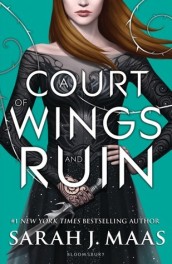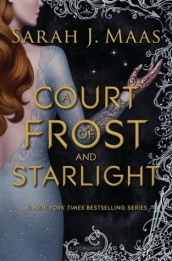For my readers who needs reminding of my criteria for critiquing, please read the following. Otherwise, please feel free to skip this part to the book image for the review.
![]() When I review books, I always scrutinize the heroine. Expectations of women may have changed over the years. Yet, I still see room for improvement. A woman’s roll in society is so ingrained in the minds of Americans that most of my country people are unconsciously discouraging girls at impressionable ages. Let girls create their science experiments, fix cars, and build robots (all with the proper adult supervision as it should be for all kids). Tell girls they can be anyone they want to be.
When I review books, I always scrutinize the heroine. Expectations of women may have changed over the years. Yet, I still see room for improvement. A woman’s roll in society is so ingrained in the minds of Americans that most of my country people are unconsciously discouraging girls at impressionable ages. Let girls create their science experiments, fix cars, and build robots (all with the proper adult supervision as it should be for all kids). Tell girls they can be anyone they want to be.
Since I’m reviewing Young Adult books (I love the imagination of the authors), I always look for a strong female character. Then I look for a male counterpart that is equal to the female. I believe that women and men are equal. Strong women shouldn’t “settle” for men who are inferior to them, and they shouldn’t be dominated or bullied by a man’s enormous ego (or lack of).
Then I look at the storyline. This is what draws a reader in and keeps them turning the page till the very end. If I can predict everything that’s going to happen, it’s a boring book. If it’s the Young Adult version of a British Victorian novel (they loved their excruciatingly mundane details), it’ll put me to sleep. Any type of media that puts me to sleep is not very good. An awesome book would have me up for as long as it takes to complete the book. Harry Potter and the Order of the Phoenix – the longest book in the series – had me up for forty-eight hours strait because it was that good.
Writing style is last. Most people could care less if the prose are beautiful. The only people truly interested in prose are writers and scholars. Otherwise, everyone else is looking for entertainment value. Case in point for writing style are the books I’m reviewing in this post.
A Court of Wings and Ruin by Sarah J. Maas
The final installment of A Court of Thorns and Roses. At least, for Feyre’s story.
The big war against the invading King is underway. Feyre and the Court of Dreams have a daunting task before them. First, I would like to comment on Feyre and Rhysand’s relationship. I agree Rhysand was far better match for Feyre than Tamlin at the start of the series. I could not believe how much Tamlin disappointed me as the series progressed. Though, despite his controlling and misogynistic relationship issues, he did pull through in the end by spying on the King and delivering some much needed intelligence. Tamlin is still a petulant child in an immortal High Fae body.
Rhysand was good to his word. No only did he make Feyre High Lady (his ruling equal), he also allowed Feyre to make crucial decisions and stood by her choices. I loved the true equality and love between the two.
However, Maas did add an important addendum to the rules governing mates. As in, whatever higher Fae power decides who are mates is not perfect, which means there is no guarantee one mate will fall in lover with the other. Maas put a lot of gravitas describing this addendum leading me to believe it is an important fact later in the series.
Feyre was her usual awesome self in the book. Admittedly, Feyre shines at one-on-one combat when her life is on the line. She is smart and quick in high tension situations. Warfare is another beast, and I applaud Feyre for recognizing her strengths and weaknesses. There is no weakness in letting others take the lead and helping in different ways, which Feyre helped the war by playing to her strengths.
With her talent for bargaining with ancient, otherworldly Fae, she gains some powerful allies. She shines when procuring a mirror for one ancient Fae, the Bone Carver, to gain his aid in the war.
When a person looks into this specific mirror, the mirror shows the viewer their true selves. Most Fae – even high Fae – would go crazy at the sight. Kudos to Feyre for accepting her inner monster. Though it should not surprise an avid reader of the series. Another of Feyer’s strengths is knowing her true self. While seeing her true self does slightly shakes her, already knowing the dark corners of her soul helped her to accept the vision of her dark corners manifested in the mirror.
Because of her special talent and – frankly – compassion in her dealings with the ancient Fae, the war was not a complete hopeless cause. Honestly, the war was barely won with a ton of luck.
Wars in books can potentially be problematic. I feel a writer must balance the details as to not give too much or too little. A writer also needs to realize wars are waged over the course of months or even years. Some writers create a war as lasting over the course of a single day. Good triumphs over the big, black hat wearing bad. Job done.
Even though the book might be fiction, and I keep in mind that fiction does not need to be judged in the halls of reality, even I have a hard time believing a war can be fought and lost over the course of a day. Readers do not completely suspend their disbelief. Sometimes keeping to snippets of reality – even in fiction – is useful.
However, the war does not need to be described in excruciating detail à la Hemmingway. (Do not get me wrong, forests are majestic and a vital part of our ecosystem. Yet, four pages dim the majesty of any forest).
Maas did a good job describing this battle. Along with the sights, sounds, and smells of the battlefield, she gave details on the battle strategies and did a good job breaking up the intense seriousness with tasteful humor. The details most written wars lack, help to give the reader the idea of how long the war was waged. I had the impression the war lasted a few months at least.
There were a few war related passages that slowed down the read seeming tedious. Considering everything, the passages were relatively small cons among the numerous pros of the book.
Maas wrapped up Feyre’s section of A Court of Thorns and Roses series perfectly. She did have a happy ending – albeit a happy ending for now. Maas left enough loose threads for Nesta’s story to begin, but not leave the reader unsatisfied with Feyre’s story ending.
Since I already have the first two books on my bookshelf, and they would be incomplete without the third, I really do not have to express my satisfaction with the book. A reader would not be wasting their money buying a hardcopy.
A Court of Frost and Starlight by Sarah J. Maas
A Court of Frost and Starlight is a novella making the transition from Feyre’s story to her sister, Nesta’s, story, which is nice knowing how the characters are faring after the major war with the invading King. Although, I am ambivalent with A Court of Frost and Starlight since it is nice knowing my favorite characters are attempting to heal from a major traumatic experience. Despite their long lives, I imagine war-time trauma will remain with the characters forever. However, Nesta’s downward slide into bing drinking, numerous one-night-stand, and pushing away those she loves is hard to read.
![]()



